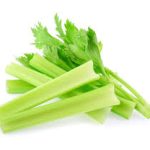 YOUR FOOD – Where Food comes from and how it is produced.
YOUR FOOD – Where Food comes from and how it is produced.
Do you really know what you’re putting in your mouth?
Today we are looking at Celery- This is used by most people, in soups at this time of year. In the warmer months it is very much a party favourite with dips, however for those wanting to monitor their weight it can be used all year round as celery is a negative calorie food.
As juicing celery is a great blood cleanser, the seeds were used in ancient times to treat colds, indigestion, arthritis, along with liver and spleen conditions. Celery is said to increase the pheromone level’s in men’s sweat ( which makes them more attractive to the ladies).
There are 3 types of Celery:
Western Celery
Chinese Celery
Celeriac
Planting celery, it needs warm days and cool nights and takes around 12-18 weeks from planting to harvest. Celery is picked before the plants “bolt” into flowers. It is harvested by cutting at the crown, usually early in the morning. It is then washed, packed, chilled and then shipped in refrigerated trucks to wholesale markets etc.
Harvesting Celery is strenuous, physical work, which is often carried out wearing long rubber gloves because some people develop skin allergies when handling this vegetable.
Celery is often grown directly following another vegetable crop. This means the seedlings are going into soil that has grown a crop such as potatoes, carrots or broccoli, so the paddock has often been recently treated with insecticides, fertilisers, fungicides and weedicides specific to those crops.
Chemicals used on Celery:
Fertilisers
Plants need generous feeding to grow quickly, otherwise stems become course and stringy. Prior to planting and throughout the growing period, soil is treated and plants are fed with petroleum based NPK fertilisers containing the additional trace elements magnesium sulphate, borox, iron sulphate, copper sulphate, zinc sulphate and sodium molybdate.
Insecticides
Celery is particularly susceptible to insect attack. Pesticide sprays may be necessary every four to seven days in severe outbreaks of lucerne leafroller caterpillar. Other pests that may require control include aphid, cutworm caterpillar, two-spotted mite, thrip, leafhopper and snail. Producers can use any of over 80 registered insecticides.
Fungicides
Celery seeds are dusted with a fungicide prior to planting into soil. Chemicals are also often used to treat black heart and other diseases, such as blight and mould, and growers have more than 200 approved products to choose from.
Herbicides
Weeds can be difficult to control because celery is a slow-growing crop that takes considerable time to fully cover the ground, and selective weedicides such as glyphosate and over 260 others are used in the celery crop.
This no doubt will give you a new appreciation for Organic or Bio Dynamic- or possibly you wish to have a go yourself and grow your own celery in the warmer months.
